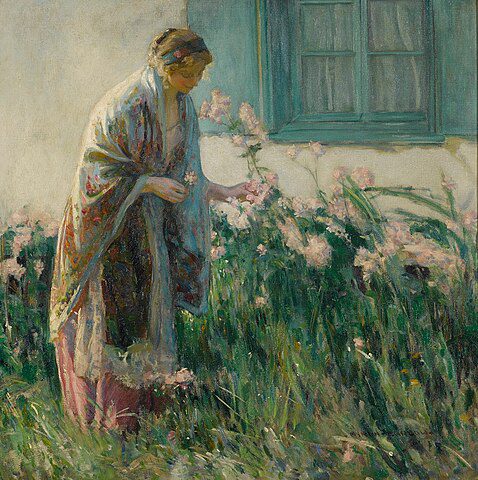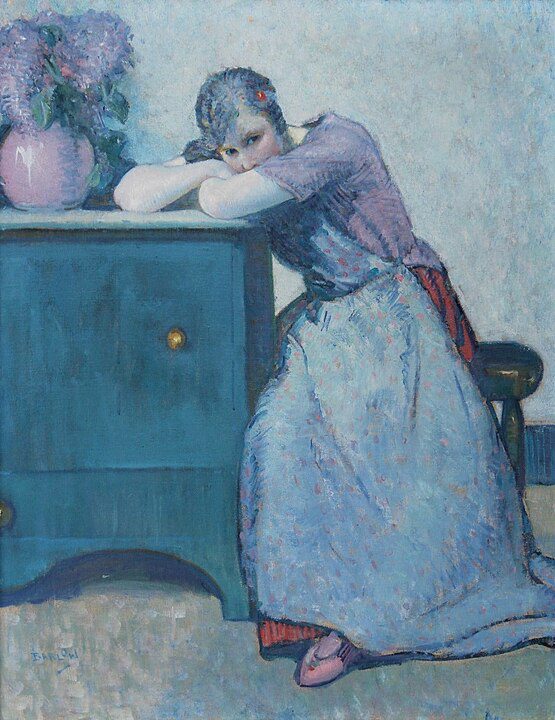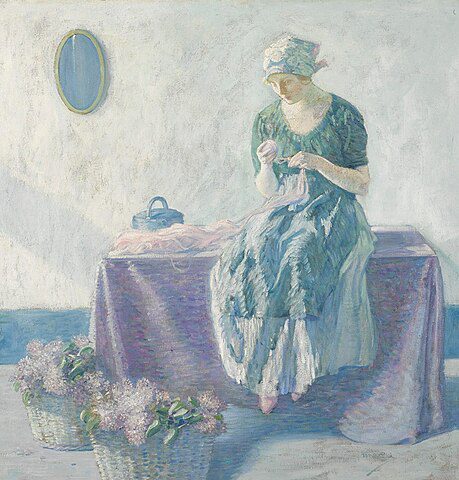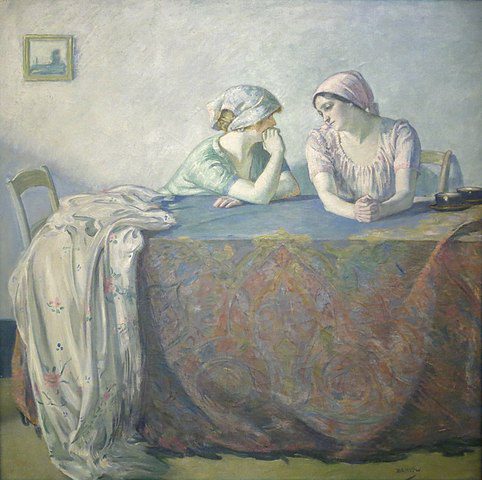
Myron G. Barlow (1873-1937) was an American artist who carved a distinctive path in the realm of fine arts, particularly known for his evocative genre scenes, portraits, and landscapes. Born in Ionia, Michigan, Barlow’s artistic journey led him across the Atlantic to France, a common destination for many American artists of the time seeking the rigorous training and vibrant artistic community found in Paris.
Barlow’s education in art began earnestly at the Detroit School of Arts, but it was at the prestigious École des Beaux-Arts in Paris where his technique and style were refined under the tutelage of Jean-Léon Gérôme, a towering figure in 19th-century French academic painting. This training imbued Barlow with a mastery of classical techniques and an appreciation for meticulous composition and detail that would become hallmarks of his work.

Choosing to settle in the French countryside, Barlow established his studio in the village of Trepied, in Normandy. This serene setting provided endless inspiration for his paintings, which often depicted the simple, rustic life of the villagers. His works are celebrated for their intimate portrayal of daily life, rendered with a sensitivity and depth that transcend mere observation. Barlow’s subjects, whether engaged in domestic tasks or lost in moments of contemplation, are imbued with a dignified grace, reflecting his deep respect and affection for the rural way of life.
Subtle & Delicate
Barlow’s technique, characterized by a subtle palette and delicate handling of light, reveals his affinity with the Impressionists, though his work remains distinct for its adherence to traditional composition and its emphasis on narrative. His paintings often evoke a sense of timeless tranquility, a testament to his skill in capturing the essence of his chosen subjects.
Despite his American roots, Barlow’s work was profoundly influenced by his life in France, embodying the fruitful exchange between American artists and the European traditions they embraced and reinterpreted. His contributions were recognized with numerous awards and honors, including medals at the Paris Salon, an institution that was the pinnacle of academic art achievement in his time.

Barlow was also a member of the Société Nationale des Beaux-Arts, a testament to his esteemed status within the French artistic community. His work was exhibited widely, both in Europe and the United States, garnering acclaim for its elegance, emotional depth, and technical proficiency.
Atmosphere & Mood
In addition to his genre scenes and portraits, Barlow’s landscapes reflect his keen observation of nature and his ability to evoke the atmosphere and mood of a place. Whether capturing the soft light of dawn or the rich hues of the countryside, his landscapes offer a lyrical interpretation of the natural world that complements his more figurative works.
Throughout his career, Barlow remained dedicated to his craft, exploring the nuances of human experience and the beauty of the natural environment with equal passion. His legacy, though perhaps not as widely recognized as some of his contemporaries, is that of an artist who bridged the traditions of the past with the evolving tastes of the early 20th century, creating works that resonate with a timeless quality.

Barlow’s death in 1937 marked the end of a career that spanned over four decades, during which he contributed significantly to the American and French art scenes. Today, his paintings can be found in prestigious collections and museums, where they continue to be appreciated for their beauty, technical skill, and the gentle humanism that defines his oeuvre. Myron G. Barlow’s work remains a testament to the enduring appeal of art that captures the simple, yet profound moments of everyday life, rendered with compassion, elegance, and artistry.




